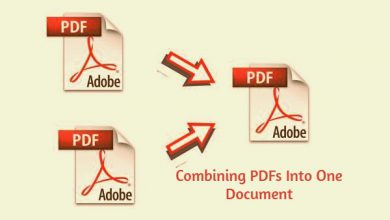Boosting Production Efficiency with Innovative Software Solutions

Production efficiency is critical for businesses of today. So, what does this mean for your own enterprise? You ought to find ways to produce more goods and services while cutting costs at the same time. Moreover, you have to deliver products and services to customers when, where, and how they need them. Sounds like a tall order, eh? But this shouldn’t worry you that much so long as you have the right tools with you.
Innovative software has emerged as a solution to the ever-evolving market and customer trends. What they do is help streamline workflows, increase real-time visibility, provide data-driven insights, and identify bottlenecks that may affect the production process.
Then again, how can you use such programs to your advantage and ensure your business benefits from them? Here’s a look at some of the top ways:
Seamless Quoting
In the not-so-distant past, creating quotes for customers was a tedious job prone to errors and delays. And remember, even the slightest error in this process could easily impact your finances or push away a potential customer. However, in the modern world, this has significantly changed. The rise of innovative solutions such as job shop software has made it easy for businesses to give customers accurate estimates of job costs and lead times.
For example, if a customer requests a quote for your services, all you need to do is open your quoting software and select the desired option from the pre-built templates. You’ll get results in seconds! This eliminates the need for calculators, as well as gets rid of typos and the scrambling to meet deadlines.
To add, quoting software also helps keep track of all the iterations of the quote, and you could revert to any previous version. Through this, transparency and accountability throughout the process are guaranteed. Finally, customers can make payments directly through the software, eliminating manual follow-ups.
Collaboration and Communication
There’s no question that communication and collaboration are an integral part of any business team. Why? They facilitate seamless information flow and teamwork and enhance performance. About 75% of employees rate teamwork and collaboration as very important in a company. But this collaboration doesn’t come about without the right tools and systems.
Project management tools provide a central hub for teams to share tasks, track progress, and work jointly on projects. Additionally, instant messaging apps ensure that there’s real-time communication where teams can exchange updates, ask questions, and troubleshoot issues as they happen.
Teams can also use videoconferencing tools to have face-to-face meetings regardless of location. This is important in fostering closer relationships, building relationships, and brainstorming solutions.
Real-Time Visibility and Data-Driven Decision-Making
Data is the new gold, and any business that uses it to make decisions is likely to succeed. In the past, it was common for businesses to rely on assumptions during the production stage. The downside of this approach is that they faced the market from a less-informed point of view, and it was easy to get it all wrong.
This is where production monitoring software and data analytics tools step in, offering a clear, up-to-the-minute view of every process in immaculate detail. For example, dashboards can display production metrics such as machine uptime, output, and quality in real-time. This provides a clear view of the process.
Data-driven insights are vital for identifying areas for improvement, such as resource allocation, production schedule optimization, and inventory management. This means fewer bottlenecks and machine downtimes, as well as, of course, improved workflows. Additionally, you can say goodbye to overstocking and running out of stock as you can now predict future demands based on trends and historical trends.
Identify Challenges and Opportunities
Want to succeed in business? You need to have the ability to identify bottlenecks and mitigate them before they affect your enterprise and see opportunities right away so you can take advantage of them at the soonest.
For example, a clothing manufacturing company is struggling with a slow turnaround. Production management software reveals that the stitching machine operates at only 80% efficiency. This insight could prompt them to analyze data on fabric cutting, stitching, and finishing times or any maintenance issues. By correcting them, the enterprise can get the machines and the resources back to full capacity.
But software solutions don’t stop there. They also offer predictive analysis through artificial intelligence (AI) and machine learning capabilities, which can be used to analyze machine health, trends, and any changes that may affect production. These help you take proactive measures to unlock opportunities, reduce downtime, and provide quality.
Scheduling Optimization

Proper scheduling is one of the biggest factors affecting businesses. A study shows that those with more stable scheduling could increase sales by 7%. This is because proper scheduling ensures that you avoid last-minute scrambles and time wasting, as well as allows for appropriate utilization of resources and lead times.
Also, with scheduling software, businesses can automate the whole scheduling process. This is achieved using real-time data and pre-defined rules to eliminate any need for human intervention. That way, your field team can prepare early for any jobs, saving time and resources.
If there are any unexpected changes and delays, the software can automatically adjust the schedule, optimizing it for production efficiency and seamless workflow. Additionally, the visual task boards also help you get clear visual representations of the schedule and progress. The software can then assign jobs based on progress and availability to help save time and optimize performance.
Boosting Scalability and Flexibility
As your business flourishes, you should be prepared for things such as increasing demand for creating products and services, onboarding team members, and handling customers. Meeting such demands is crucial in a competitive market, but there are many tools that people turn to in such scenarios such as data historian software tools that a lot of companies utilize to remain on top of their game even as their production increases.
Modern software supports capabilities such as enterprise resource planning (ERP) systems, which help businesses streamline their operations, improve efficiency, and make better decisions by providing a centralized platform for managing and analyzing data. With this technology, businesses can expand their product lines without scaling up the entire operational line.
In essence, scalability and flexibility aren’t just about increasing your production because of a growing demand. It’s also about positioning your company for long-term success in the ever-changing market.
Conclusion
Without a doubt, software solutions have become a significant part of modern business. They’re technologies you just can’t afford to ignore. They help run operations smoothly through data analytics, proper quotation, scalability, and optimized scheduling. By adding these solutions to your operations, expect some major boost in terms of performance and efficiency, hence more growth.




